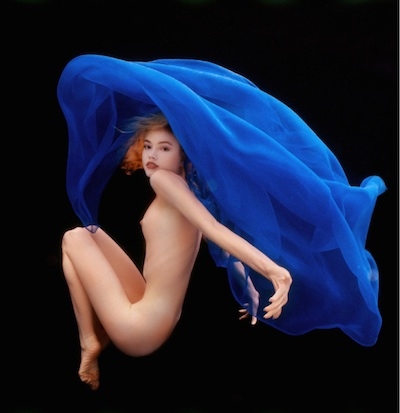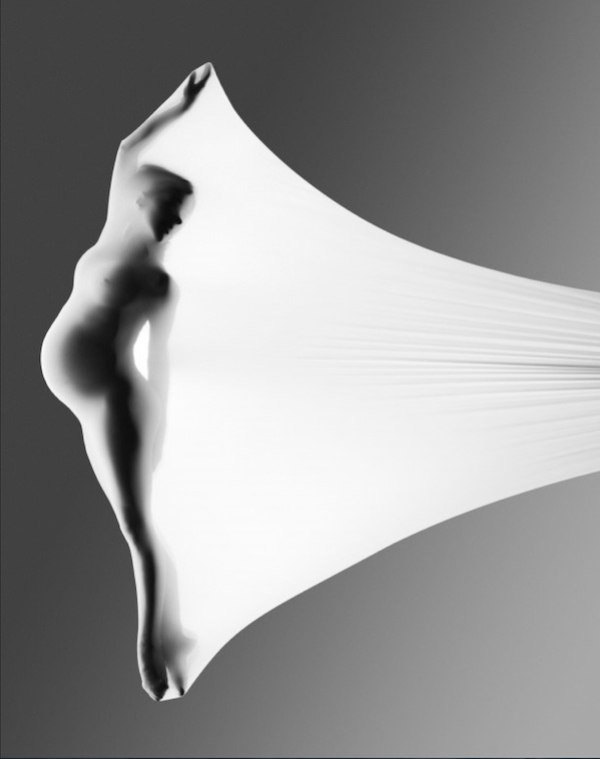Photographer Profile - Howard Schatz: "My studio became a research lab"

|
|
|
Schatz is marking his career milestone in a big way, with a two-volume, boxed-set retrospective book featuring 830 pages filled with 1,083 photographs. The collection includes work from 32 different projects, from his studies of boxers and botanica to his portraits of actors, dancers, newborns, homeless people, and redheads. The work is also currently on view at the Fairfield Museum in Fairfield, CT, and this fall will be part of a group show about the history of sports photography at the Brooklyn Museum.
The new book is Schatz’s 21st. Over the past quarter century, his work has also appeared in Sports Illustrated, Vanity Fair, the New York Times Magazine, and New York magazine, among other publications. It’s not hard to understand why he has become so popular with editors and their audiences: As a photographer, Schatz is a sensualist who has learned how to combine two basic ingredients, light and skin, in an astonishing variety of ways, from his colorful “Body Knot” series to his black-and-white studies of fleshy folds. In his “Liquid Light” series, he adds dripping paint to the mix, while another series of nudes celebrates the pregnant female body. His “Actors Acting” series focuses on the malleable faces of performers like Ricky Gervais, Amy Poeller, Ben Kingsley and Hugh Laurie. The work he is perhaps best known for, his underwater images, captures bodies in weightless grace.
The sheer quantity of his output, and his mastery of craft, speak to the ravenous hunger Schatz has for making pictures, an appetite that’s been growing since he went to a party when he was in medical school in 1964. Two things happened there: A young doctor Schatz met suggested that he think about specializing in ophthalmology, and another physician, just returning from military service in Korea, showed him a new camera he'd bought there, a Nikon F.
“I loved it,” Schatz says. “You could change the ASA and the aperture and shutter speed, and viewing through the lens was marvelous.” Soon thereafter he wrote to a cousin who was serving in Korea and asked him to buy one of the cameras for him.
Exacting Methodology
After going into ophthalmology, Schatz specialized even further, becoming an expert in diseases of the retina, and in 1973 he opened his own practice in San Francisco. He later also taught at the University of California San Francisco Medical Center, authored over a hundred scientific papers and text books, and lectured around the world.
And, he says, wherever he went, he had a camera with him.
“At any meeting or lecture I was at, there was a camera,” he says. “I had a camera at my medical office. On the passenger seat of my car, there was a camera. I really enjoyed making pictures and looking at and studying the pictures—these frozen moments that you never really see.”
In 1987, when his youngest child graduated from high school, Schatz decided to make photography a bigger part of his life. “I felt I could devote a day a week, a Saturday, just to photography,” he says. “My associates were playing golf on the weekend, so I figured, heck, I could do photography.”
Soon Saturdays weren’t enough. Schatz plunged into photography, devouring books and frequenting gallery and museum exhibitions. He turned the dinning room of his home into a studio and bought used Hasselblad equipment and Balcar strobes from a friend. His work earned praise, but it was essentially done as an experiment—he began photographing redheads, he says, as a way to learn color.

It’s tempting to try to identify some a kind of metaphysical connection between Schatz’s medical practice, his work to restore vision in others, with his own developing interest in photography. He sees the connection between the two parts of his life in more practical terms.
“There is not an association, grossly, between science and art,” he says. Rather, the link was in the exacting methodology he brought to the task of learning photography.
”My studio became a research lab,” he says. “I could see a photo in a magazine and then work in my studio to figure out how to do it.”
When Schatz and his wife, Beverly Ornstein, built a house in Marin County, he took his research in a new direction. The house had an indoor pool that Schatz used for exercise, but while swimming one day he had a revelation. “I realized that underwater you’re essentially weightless,” he says. “At the time, I was shooting dancers, and I thought, ‘Wouldn’t it be wonderful to photograph them underwater?’”
To create the images, he had to overcome a number of technical challenges, including how to light them without electrocuting himself, his subject, and anyone else in and around his pool. Schatz also had to figure out how to compose while underwater and how to get the color right. “Water sucks out red and yellow, so when I started, all my images were coming out cyan blue,” he says.
He solved the problems one by one over six months, shooting and taking notes in the shallow end of his pool, controlling for one variable at a time, until he was happy with the results. Over the next year, he produced an extraordinary series featuring dancers untethered from gravity.
The Worst That Can Happen
The work caught the attention of Martin Pederson of Graphis, who published it in the book Water Dance. In 1995, Schatz and Ornstein decided to try a different kind of experiment—moving to New York to launch a photography business. “At first it was going to be a yearlong sabbatical from my medical practice, but after the fifth year of the sabbatical it became pretty clear we were never going back to San Francisco,” Schatz says.
Looking back at his career, or, rather, both of his careers, Schatz thinks he may simply have always had a native talent that allowed him to look at a picture and remember it in great detail. He cites one of the books he wrote as a physician, called Interpretation of Fundus Fluorescein Angiography, as an example.
Fluorescein angiography is a diagnostic technique in which a fluorescent dye is injected into someone’s arm; fluorescent filters are then used to photograph the retina as the dye flows through its blood vessels; the patterns the dye makes are indicative of various diseases and abnormalities. Schatz’s book was 800 pages long and contained 1,200 photographs of these blood-vessel patterns.

“And I knew every one of those photos,” he says. “I wrote about and described what was in each one.”
As a portrait photographer, Schatz has also drawn on what he learned as a doctor to help put subjects at ease. “Being a retina specialist, I was seeing patients who were very frightened and anxious about losing their site,” he says. “I had to learn to behave in a certain way so that when I would walk into a room, the patient would feel that he or she was in the right place. That skill has been very helpful in my photography.”
But in other ways, he says, it’s been the other way around—it is photography that has put him at ease and changed the way he looks at life.
“In medicine, especially in my field, it was about getting it exactly right, behaving in the most serious, rational, exacting, compulsive manner,” he says. “In surgery, a mistake of one micron, a thousandth of a millimeter, could mean a blind eye. Whereas in photography, and I suppose in all art, it’s about mistakes. It’s about things you don’t expect, about looking for wonder and magic and trying all kinds of things. What’s the worst that can happen? Your picture won’t come out.”
Today, he says, he is no longer the compulsively serious, careful-thinking person he used to be.
“I’m much freer and open to ideas,” he says, “and I’m unafraid of all sorts of things.”



